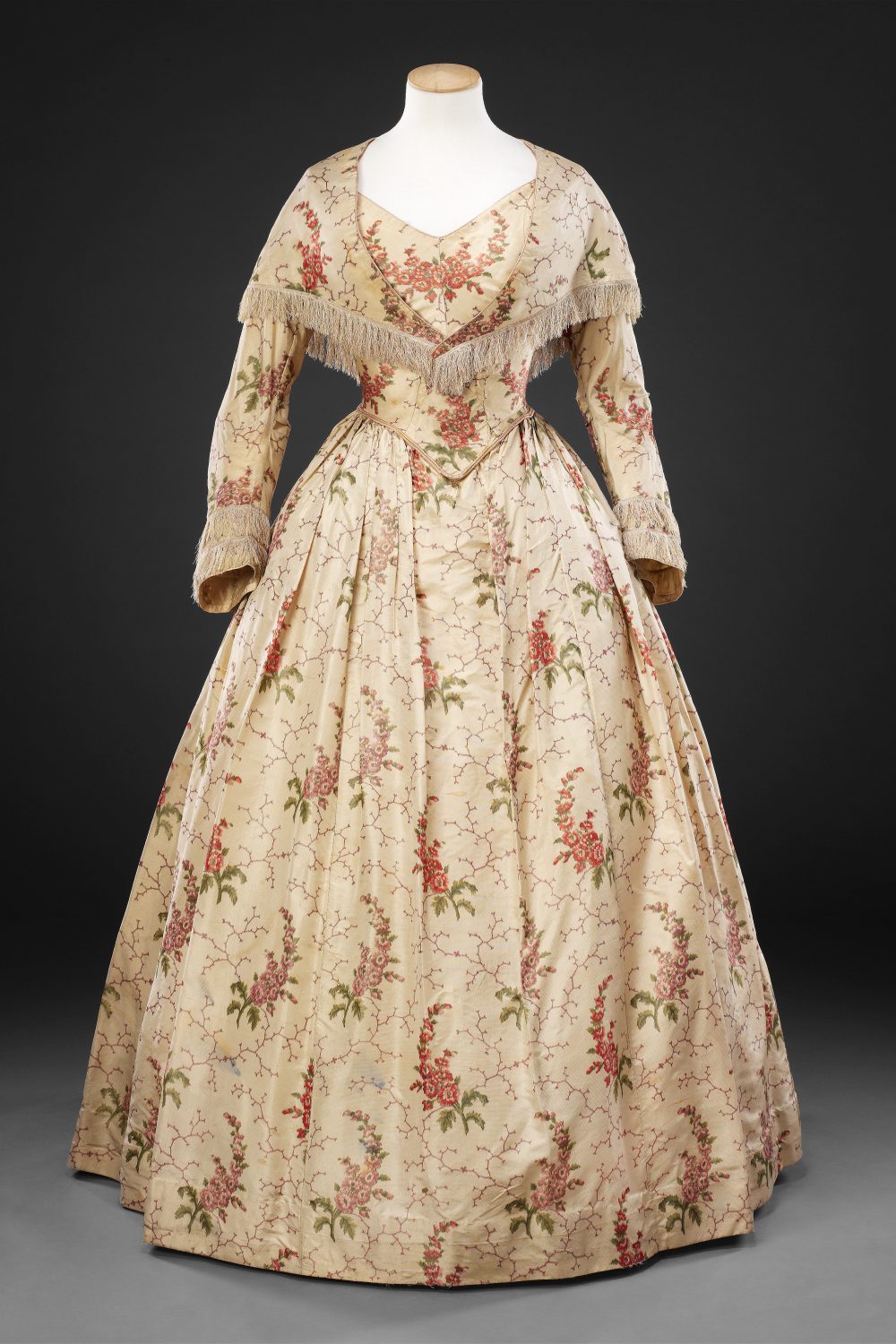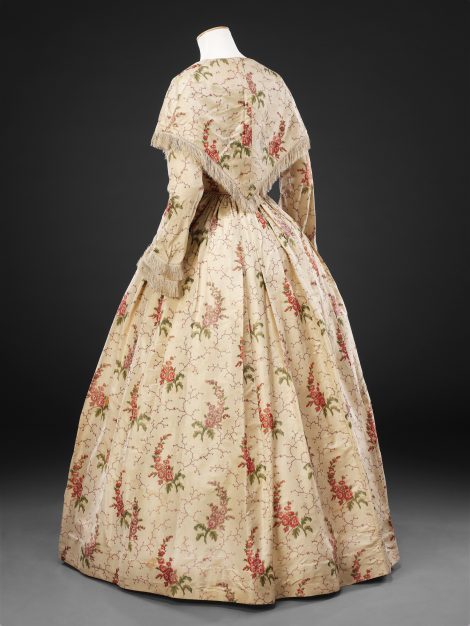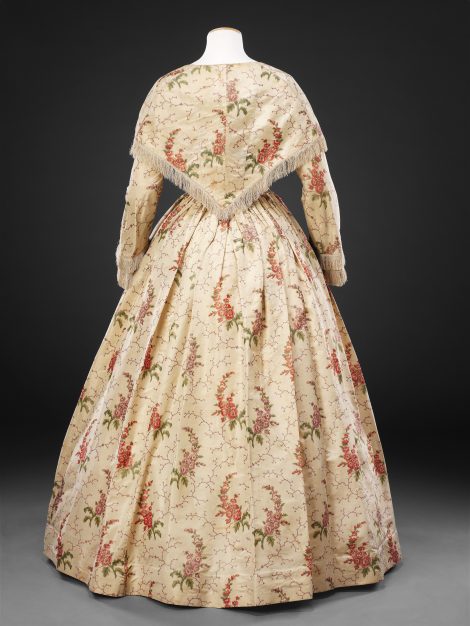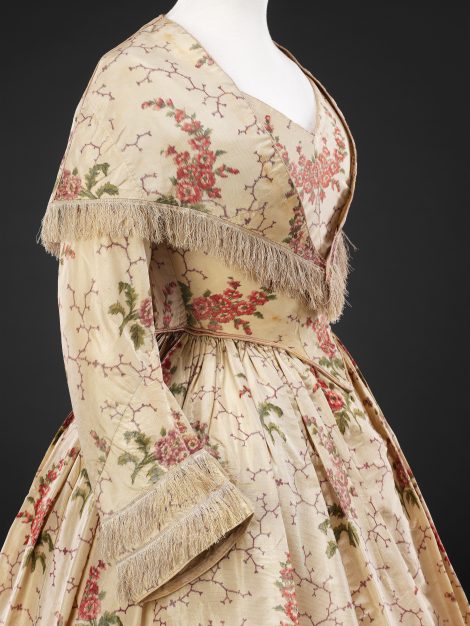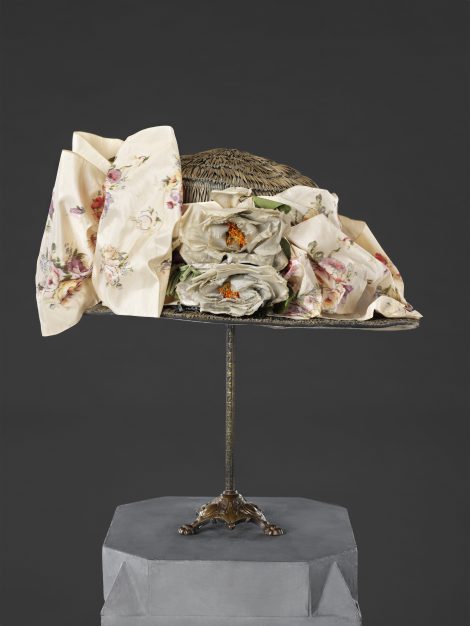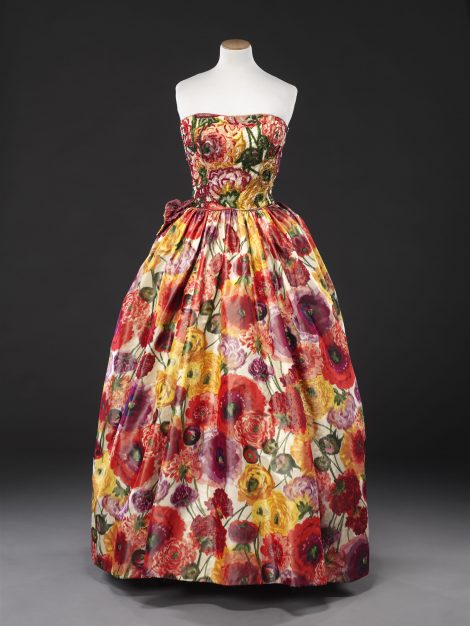Like many other examples of this date, the clear lines of this sparsely trimmed dress show off its silk to advantage. In this case the chosen fabric is warp-printed silk. Its design was produced by printing the warp threads, that ran the length of the fabric, before the weaving process began. The slight shifting of the threads resulted in soft, imprecise outlines of the motifs that lent themselves to delicately coloured floral patterns, such as this example, that were recurrently popular in the luxury market. (See, for example, a hat of the early 1910s trimmed with broad floral ribbon, and a ball gown of the late 1950s). By the mid 19th Century the process had become mechanised with roller printing, but originally relied upon a method of resist dying. Ikat was a similar technique originating in Indonesia in which yarns were tightly wrapped as resist before dying and weaving.
The décolletage of the bodice, partly covered by the matching shoulder cape, would probably have been concealed beneath fine white muslin embroidered with a design of small flowers.
